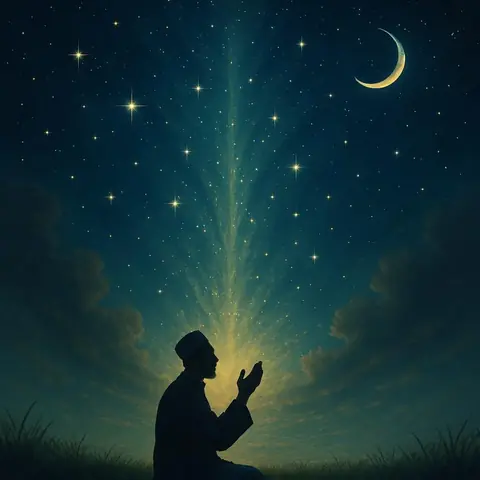Among the most sacred nights in Islam, Laylat al-Qadr, known as the "Night of Power" or "Night of Decree," holds a deeply spiritual place in the hearts of Muslims.
Described in the Qur'an as "better than a thousand months," it is a night during the final ten days of Ramadan when divine peace descends, gates of mercy open, and light pours forth from the heavens to the earth.
Yet, beyond its religious significance, Laylat al-Qadr has been associated across centuries with profound metaphysical and mystical experiences, often narrated by Sufi mystics, spiritual seekers, and folk traditions throughout the Islamic world. It is believed that during this night, the veil between the seen world and the unseen is at its thinnest, allowing for rare and extraordinary encounters with the divine.
1- Heightened Spiritual Presence
From the perspective of Sufism and Islamic spirituality, Laylat al-Qadr is seen as a moment of rare spiritual disclosure.
It is said that during this night, the invisible barriers between the material and spiritual realms grow thin. Some devotees describe receiving radiant inner signals, while others sense an ethereal voice whispering truths beyond normal comprehension.
Certain mystics recount hearing unearthly sounds or sensing the presence of luminous beings, believed to be angels or the spirits of saintly figures.
2- Visions of Symbols and Signs
Worshippers who practice spiritual retreat (iʿtikāf) during the last ten nights of Ramadan often report extraordinary visual experiences specifically on Laylat al-Qadr.
Some describe seeing light formations piercing the night sky, stars behaving in unusual patterns, or fleeting cosmic signs.
Others receive profound symbolic dreams that they interpret as cosmic communications or rare spiritual insights granted only in moments of heightened divine connection.
3- Out-of-Body Experiences
Modern accounts also include phenomena resembling what Western science calls Out-of-Body Experiences (OBEs).
Individuals describe moments during deep prayer or prostration when they feel their consciousness separating from the physical body, viewing themselves from above.
While such experiences are also reported near death or during intense meditation in other cultures, many Muslims link these transcendent moments particularly to Laylat al-Qadr, interpreting them as temporary liberation from earthly limitations.
4 - A Distortion of Time
Many who observe Laylat al-Qadr mention a strange alteration in the flow of time.
Some feel that moments stretch endlessly, while others experience a profound stillness, as if time itself has paused.
Within spiritual interpretation, this phenomenon suggests a partial departure from the normal dimension of time, offering a glimpse into a higher, timeless realm.
Examples from Cultural Traditions
In North African villages, it is said that those granted the grace to witness Laylat al-Qadr may see a beam of light tearing through the night sky, or hear their name called from an unseen realm.
Sufi mystics recount that on this night, divine knowledge and cosmic secrets are sometimes revealed to the purified hearts of saints - truths too sacred to be spoken except among the spiritual elite.
In Yemen and the Levant (Greater Syria), there are folk stories of individuals who were miraculously cured of severe illnesses after deep, heartfelt prayers on Laylat al-Qadr, often seen as manifestations of supernatural grace.
A Night When Realms Intersect
Laylat al-Qadr can be seen as a rare rupture in the fabric of time and space — a sacred moment when earthly existence brushes against the divine.
It is akin to what some ancient traditions referred to as a "Sacred Night" or, in certain Western mystical thought, a "cosmic convergence" where the boundaries between dimensions open, allowing the soul to ascend beyond ordinary reality.







No comments:
Post a Comment